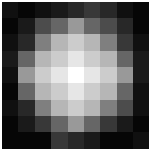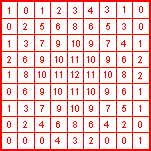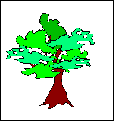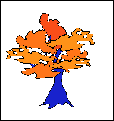Multiwavelength Milky Way: Making an Image
![]()
I. Telescopes and detectors - how they gather light
II. Reconstructing the image
III. False colors - how colors are used to "see" an invisible image
Telescopes and detectors
See "Different telescopes for different wavelengths".
Reconstructing the Image
If data can be stored from a detector digitally, the information can be quickly transferred from the instrument to a receiving computer. The data is first converted into binary numbers (numbers created using only 1s and 0s). After transmission to a receiving computer, the data is reconverted to the original digital information, which can then be used to construct an image. Above we said that, for a CCD, the number of photons hitting a pixel is assigned a single number representing the total brightness for that pixel. Each pixel on the CCD has a specific location. For example, there is only one pixel on row20, column300. When reconstructing an image, the data is laid out on a grid that matches the CCD. Then each brightness level can be assigned a color (see below), and an image appears.
 An example of what a CCD image might look like |
 A grid with numbers corresponding to brightnesses in the CCD-like image to the left |
False Colors
A true-color image is the kind of photo we're used to. If we substitute orange for purple, blue for yellow, then we have a false-color image.
 true-color tree |
 false-color tree |
Colors can be associated with the intensity of light from an image, or with temperature.
Remember the "paint by numbers" kit, where each number corresponded to a specific color? If you followed the directions, a picture would appear. Astronomers do a similiar thing when viewing and interpreting electromagnetic radiation (light) from distant objects. Other than visible light, electromagnetic radiation can't be seen with the eye. So, when light (such as X-ray light) is detected, astronomers assign different colors to different brightness levels. That way, they can visualize the object being studied.
Usually, the brighter levels are color-coded in red colors and the fainter levels are coded in blue/purple colors. For example, in the CCD-image example above, a false color image might
look like the following:

Noteworthy:
In connection with COBE and the TARP (Technology And Research Partnership) project, two high school students have written a short discussion on how DIRBE scanned the sky.
Resources:
Getting the Picture from Hubble Space Telescope - how images are made

